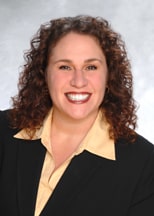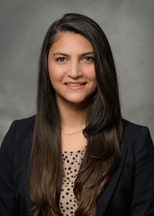By
and
Saba Zafar. Esq.
After almost three years of frequent changes to the California Division of Occupational Safety and Health’s (“CalOSHA”) Emergency Temporary Standards (“ETS”), on December 15, 2022, CalOSHA adopted the more permanent COVID-19 Prevention Non-Emergency Regulations. The COVID-19 ETS will continue to remain in effect while the Office of Administrative Law (“OAL”) reviews the proposed Non-Emergency COVID-19 Prevention Regulations. OAL has 30 working days to complete its review. If approved by OAL, the new regulations will remain in effect for two years.
What is Changing with the New Non-Emergency COVID-19 Prevention Regulations?
While much of the Non-Emergency Regulations remains the same as the ETS, employers should be aware of some significant changes:1
Employers No Longer Have to Pay Exclusion Pay
One of the most notable differences between the current ETS and the new Non-Emergency Regulations is the absence of exclusion pay. Previously, employers had to continue to pay employees’ earnings and maintain other rights and benefits if they had been excluded from the workplace due to COVID-19 exposure or illness contracted at work.
The Non-Emergency Regulations eliminate this provision. Instead, employers must only provide information to confirmed cases and close contacts about COVID-19 benefits they may be entitled to under local and federal law.
The Daily Screening Requirement was Eliminated
Employers were previously required to screen employees for COVID-19 symptoms before entering the workplace. This requirement is eliminated with the Non-Emergency Regulations. However, employers are still required to investigate COVID-19 illness in the workplace.
The Notice Requirements for Close Contact and Exposure are Shorter
Under the Non-Emergency Regulations, employers must notify employees of close contact as soon as possible rather than within 24 hours. Of note, effective January 1, 2023, employers may display a workplace notice in lieu of individual notification.
The Definition of “Close Contact” Aligns with the CDPH or is Dependent on the size of the Indoor Space
The definition of “Close Contact” remains aligned with the definition that the California Department of Public Health (“CDPH”) promulgates. However, if the CDPH removed the definition of Close Contact, then Close Contact will depend on the size of the indoor space where the exposure occurs.
a. For indoor spaces of 400,000 or fewer cubic feet per floor close contact is defined as sharing the same indoor airspace for a cumulative total of 15 minutes or more over a 24-hour period during an infected person’s infectious period.
b. For indoor spaces greater than 400,000 cubic feet per floor, close contact is defined as being within six feet of the infected person for a cumulative total of 15 minutes or more over a 24-hour period during the infected person’s infectious period.
c. Offices, suites, rooms, waiting areas, break or eating areas, bathrooms, or other spaces that are separated by floor-to-ceiling walls are considered distinct indoor spaces.
The Definition of “Infectious Period” Has Changed
Under the Non-Emergency Regulations, the definition of infectious period is less stringent and shorter. The Non-Emergency Regulations’ definition of “infectious period” is in line with the CDPH, as follows:
a. For COVID-19 cases who develop COVID-19 symptoms, the infectious period is from two days before the date of symptom onset until 10 days after symptoms first appeared, or through day five if testing negative on day five or later; and, 24 hours have passed with no fever, without the use of fever-reducing medications, and symptoms have improved.
b. For COVID-19 cases who never develop COVID-19 symptoms, the infectious period is from two days before the date the positive specimen was collected through 10 days (or through day five if testing negative on day five or later) after the date on which the specimen for the first positive test for COVID-19 was collected.
Employers Must Still Provide Training and Update Injury Illness Prevention Plans
The Non-Emergency Regulations still require employers to provide training to employees regarding COVID-19, but the specific training requirements previously provided in the ETS have been eliminated. Employers must now provide training regarding COVID-19 in compliance with their Injury Illness and Prevention Plan.
Additionally, employers must maintain their written procedures previously required under the ETS but may include these in their regular Injury Illness Prevention Plan.
Employers Must Maintain Records of COVID-19 Cases, but not Close Contacts
Under the Non-Emergency Regulations, while employers must keep a record of COVID-19 cases for two years, they no longer have to keep records of close contacts.
The Return To Work Criteria Has Been Slightly Modified
Under the Non-Emergency Regulations, there is no difference for those employees whose symptoms persist, unless one of the symptoms is a fever. The continued presence of symptoms (other than fever) is irrelevant if, on the fifth day, a negative test is produced.
What is Staying the Same?
Employers should be aware that the face-covering requirements remain largely the same. Employers are still required to ensure employees wear face coverings when required by a CDPH regulation or order.
Additionally, employers will still be required to exclude employees from the workplace based on CDPH isolation and quarantine requirements (or other local or applicable laws). Employers must also continue to provide no-cost testing to close contacts exposed at the workplace and to exposed employees during outbreaks.
Employer Takeaway
Until the OAL approves the Non-Emergency Regulations (they have 30 working days from December 15, 2022, to do so), the current ETS remains in effect. As such, employers should continue to comply with the current ETS until the Non-Emergency Regulations are approved. Once approved, employers should ensure that they have policies and protocols in place to comply with the new requirements. If you have any questions about how this new regulation may affect your business or need assistance preparing compliant policies or revising your practices, please contact your attorneys at Bradley, Gmelich + Wellerstein LLP. We are here to help.
1This article is not exhaustive but is intended only to highlight some of the important changes. For more information, please contact your employment counsel.

Jaimee K. Wellerstein, Esq. is a Partner at Bradley, Gmelich & Wellerstein LLP, and the Head of the firm’s Employment Department. Jaimee concentrates her practice on representing employers in all aspects of employment law, including defense of wage and hour class actions, PAGA claims, discrimination, retaliation, harassment, wrongful discharge, misclassification, and other employment-related lawsuits. She also provides employment counseling and training in all of these areas.
Jaimee routinely represents employers in federal and state courts and in arbitration proceedings throughout the state, as well as at administrative proceedings before the Equal Employment Opportunity Commission, the California Department of Labor Standards Enforcement, the United States Department of Labor, and other federal and state agencies.
Jaimee assists as a Legal Advisor to CALSAGA and is a member of ASIS International. She is rated AV-Preeminent by Martindale-Hubbell, the highest peer rating available.

Prior to joining the firm, Saba was a Senior Counsel providing advice and counsel to mid-sized to large businesses on employment law compliance and day-to-day employment issues, including implementing policies and procedures, employee classifications, employment separations, managing and disciplining employees, and COVID-19 rules and regulations. Saba also handled a wide variety of employment matters in state and federal court, including cases involving wrongful termination, discrimination, and wage-related cases.
In her spare time, Saba has volunteered as a Mediator for the Department of Consumer Affairs and the Orange County Human Resources Department. She was also a Volunteer Tutor for Schools on Wheels, tutoring elementary school students on skid row in Los Angeles. Prior to practicing law, Saba was a Judicial Extern for the California Court of Appeal, Second Appellate District.

